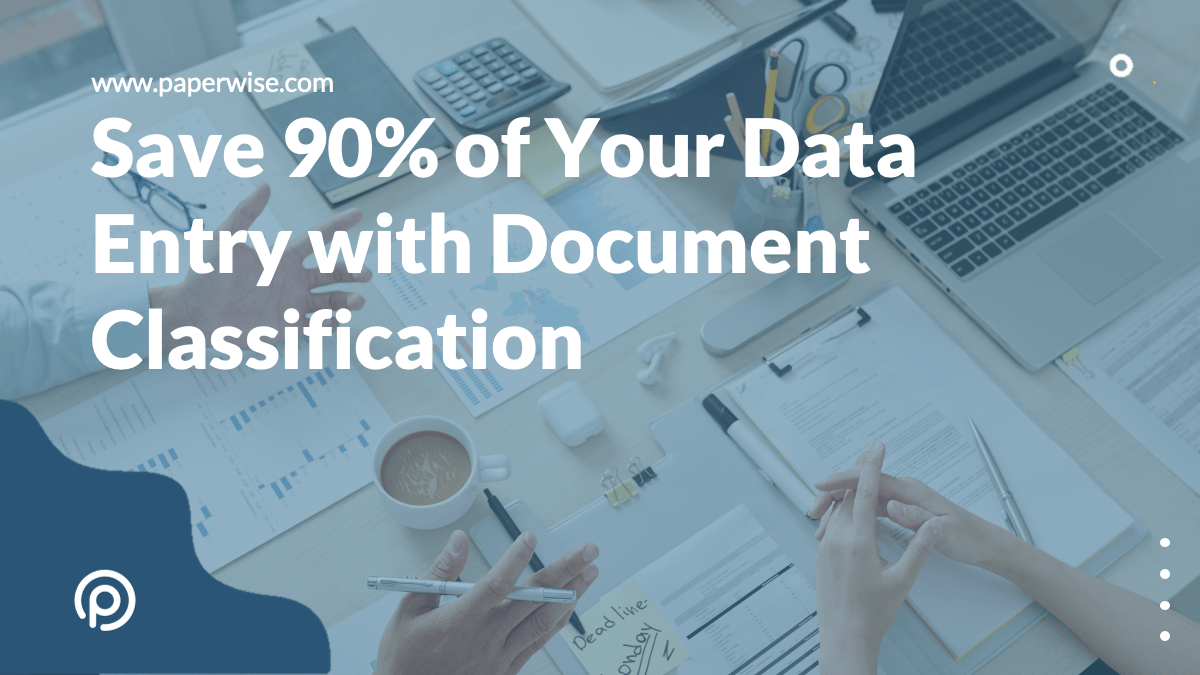When it comes to document classification, what are all the steps your employees must take when they receive a new document in your organization?
- Identifying: What kind of document is this? Is it a PO, an invoice, a return? Who sent it to me?
- Indexing: What are the important elements of this document that will allow me to use it and find it in the future? Things like PO number, vendor name and location data.
- Storing: What do I do with this information once I finish my initial work? Where do I store it, send it or link it?
The amount of work becomes even more apparent when you consider all the different types of documents you receive.
- AP Invoices: Is the invoice accurate, who is it from, does it match my PO amount?
- Mortgage Loan Files: Do I have all the files I need? Do I need to match a new rate? How do I keep track of documents arriving at different times?
- Medical Records: Do I waste office time having patients fill out forms? Is my data secure and compliant?
- Human Resources: how can I quickly onboard new employees? What do I do with PTO requests? When an employee leaves, have I collected everything I need to in order to stay secure and legally compliant?
- Contracts: Who needs to review these documents? Where do we store them? Are there expired or renewal dates that need to alert me to new processes?
Document Classification: Send in the Robots
Paperwise Symphony contains a sophisticated artificial intelligence classification agent that does this tedious work for you and learns from all the previous documents it has seen before for consistent gains in accuracy and efficiency. This AI robot actually becomes smarter as it works and it works in a similar way to how your employees would work.
For example, when an employee reviews a document to categorize, they probably don’t just start at the top and read all the way to the bottom. Instead, they would use their previous knowledge to help them scan the document for important attributes. This might involve things like familiar words and phrases, numbers, logos, size of document, layout of text, pictures, signatures, or other elements that they’ve seen hundreds of times.
The AI document classification agent inside of Paperwise Symphony does just what that human employee would do – only faster and with fewer errors. Our AI agent can recognize those same words, layouts, logos and more and learn from them to make classification even faster and more accurate in the future.
With document classification, you’ll enjoy many benefits.
Streamline Your Processes. Our classification AI is so good at learning that our clients are seeing 90% or greater reductions in the manual labor associated with classifying and indexing documents. Employees don’t need to spend hours or days on documents and can focus their time on more important work and creative problem solving that is better left for humans.
Identifying Missing or Mismatched Information. In addition to identifying documents, our AI solution is smart enough to catch missing data, other documents, missing signatures, or data that doesn’t match your system’s data. You can then use that information to send new alerts and tasks inside of Paperwise Symphony so nothing is missed and exceptions are followed up on without fail.
Reduce Costs. In addition to the 90%+ time savings mentioned above, you will save many other costs and frustrations from misclassified or missing documents, customer support issues, compliance penalties, late payment fees, and more.
Data Extraction. Once the documents are classified and identified, Paperwise Symphony extracts important information from data elements of the document based on document type. These might be things like vendor name, invoice number, bill of lading, trip or load number, and more. Thanks to tight integrations from Paperwise Symphony to your management system, you will save manual data entry and improve accuracy.




